First drive: 2012 McLaren MP4-12C in Dubai
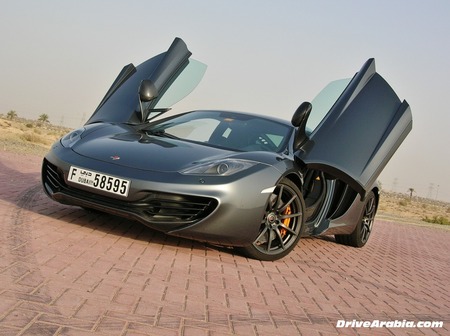
It isn’t everyday that media people get to drive a supercar. Well, in our case, we never get to drive a supercar. The closest we’d come before was the Nissan GT-R, but that’s stretching it. But then we finally managed to talk ourselves into the driver’s seat of one. We skipped secretive Ferrari, Lamborghini et al and went straight to the McLaren MP4-12C, the British carmaker’s first proper model since they redefined the meaning of “supercar” more than a decade ago with the McLaren F1.

The jumble of letters and numbers that make up its name has some meaning behind it, but let’s skip that and look at why it is a proper supercar. It’s got a carbon-fibre tub for a chassis, with aluminium subframes attached front and rear to hold the mechanicals. It’s got a bespoke twin-turbo 3.8-litre V8 with an 7-speed dual-clutch automated gearbox and rear-wheel-drive. It’s got the trick suspension as well as the trick aerodynamics. And it’s got those cool upward-opening doors.
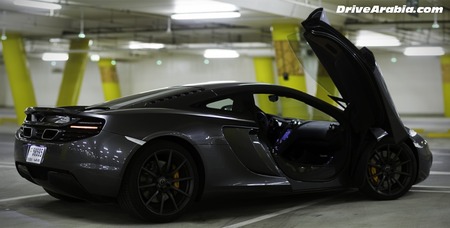
It’s also got the supercar price-tag, the trademark supercar impracticality, and the supercar build quality, but none of these are as “bad” as you’d think. It costs no more than the cheapest Ferrari, even though it is technically more advanced. It is almost as practical as a Porsche 911, if you don’t count the German’s useless rear seats. And it feels generally solid, with only a couple of exterior trim pieces out of alignment.
Of course, it’s still got just enough supercar quirks to annoy you. The carbon-fibre tub means that you have to step over a very tall door-sill, made doubly harder by doors that don’t completely move out of the way. So you have to be physically fit to just be able to enter the car. And that’s if you can get the door open, because you have to touch-swipe your hand on the door at just the right spot to pop open the electric latch. Also, a few times, the fuel-filler cover refused to open, causing a scene at the petrol station, although the staff were unusually happy to crowd around and help you out while ignoring other customers. That’s life with a supercar.
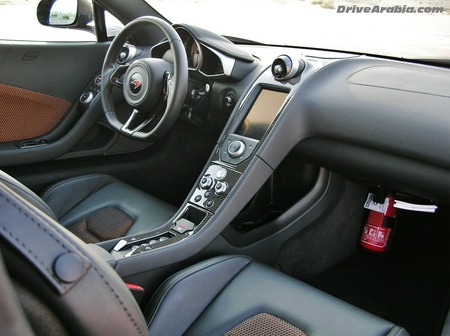
But once you’re inside the car, you’re greeted with a surprisingly spacious cabin for two, trimmed in leather and intricate cloth upholstery all over, with a ridiculously-thin carbon-fibre centre-console in the middle that manages to cram in a single a/c vent, a tall touchscreen computer, several buttons and even two cup-holders underneath. To accomplish this, the gear-selector is reduced to just a bunch of buttons, as is the electric parking brake. The dual-zone automatic a/c controls have been moved to the two door armrests, near the a/c side-vents. And there are four stalks behind the steering wheel for various functions, alongside the paddle-shifters.
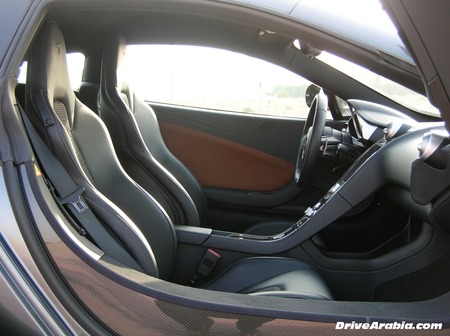
The body-hugging seats are manually-adjusted, which is good because we kept pushing it all the way back just to get out of the car. There is some storage space behind the seats, a central cubby can hold your iPod, while the boot up front can hold a small trolley-bag and groceries. The touchscreen computer is a bit complicated to use, controlling the good premium stereo, but at least the volume can still be turned up or down with a simple knob. There’s also a USB port in the centre-console cubby, but for some reason, there’s no Bluetooth. You do get LCD info screens within the gauge cluster, as well as the usual power windows, cruise control and HID headlights.

That’s enough of the gadgetry. Fire up the engine and let the real show begin. Interestingly, while we drove the 592 hp version, a 2013-model-year upgrade to 616 hp is available for all owners, free-of-charge! But there’s so much power already that a tiny upgrade isn’t going to make much of a difference. Using launch control, we fired off a drama-free 0-100 kph run of 4.2 seconds in July weather. You’d think it’d be faster, but the electronics seem to intentionally bog down the power initially to kill any wheelspin, before unleashing all the juice a half-second later. And unlike the Nissan GT-R, it sounds phenomenal in the process.

Admittedly, the GT-R is quicker to 100 kph as per our test figures, but while the Nissan benefits from all-wheel-drive, the McLaren would outrun it eventually beyond 200 kph, theoretically speaking. The Mac weighs less than 1,400 kg, about as much as a Honda Civic, thanks largely to a body made of composite plastics and aluminium, while the half-price GT-R weighs in at a stout 1,730 kg. McLaren says they can actually custom-mould the composite body panels any way the customer wishes, at extra cost of course.
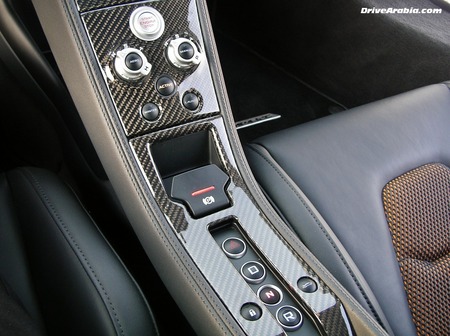
There are two knobs, one for the powertrain and one for the suspension, each one having selectable “normal”, “sport” and “track” modes. So it is possible to drive with the throttle/gearbox setting in “track” mode while keeping the suspension in “normal” mode. In full “track” mode, the electronic nannies are turned off, the gear-shifts are faster and jerkier, the throttle is more sensitive, the steering is firmer, and the suspension becomes rock-hard.
And that’s why we mostly drove with the suspension in “normal” mode all the time, switching the powertrain to “sport” once in a while. It handles spectacularly even in its softest setting, helped along by neverending grip from the wide tyres on 20-inch rims, 235-width in the front and 305-width out back. But more amazingly, the hydraulic suspension is fairly comfortable on most surfaces, matching the BMW 6-Series for ride comfort. You can even drive over speed bumps as quickly as you would with a Toyota Camry! Of course, there is always the loud cacophony of road noise and engine growl at all speeds, sounding even louder when the exhaust opens up further in “track” mode.

It’s even got a fancy automanual gearbox in which you can press a shifter paddle halfway in anticipation of the next gear-change, so the correct gear is already ready. That allows for even faster gear-changes, although we feel it’s already quick enough if you just flick it as you would in a VW Golf GTI.
The brakes are huge, easy to modulate, and stop the car with a solid sense of urgency, but they weren’t as eyes-out-of-socket strong as we thought they’d be. We’ve stopped harder in other cheaper Brembo-equipped cars. It’s probably a consequence of this being a well-driven press vehicle, although even then, it’ll still stop quicker than most cars. There’s even a rear spoiler that pops up as an air-brake when stopping from high speeds.

So it’s fast, turns fast, and makes all the right noises. But we don’t live on the racetrack. The bigger concern for most owners will be cruising and parking. As we said, the Mac is fairly comfortable, nicely climate-controlled, but very noisy. However, all-round visibility is not as bad as in, say, any Lamborghini. The mirrors offer a decent view, while the rear window actually allows you to see out the back somewhat. Still, there are no parking sensors or rear cameras, so you have to back it into spaces the old-school way, taking your time with the slightly-firm steering. It’s not really much harder than backing up a Porsche 911.
The ground clearance is pretty good for a car like this, but there are also two aerodynamic flaps hanging low under the car that scrape on everything. They look cheap enough to replace when they’ll finally fall off, but it was a relief to know that it wasn’t the actual carbon-fibre tub that was touching the speed bumps.

And if you’re wondering about fuel economy, not that you’d worry about it if you could afford one, it’s probably the most fuel-efficient supercar you can get. Stomp around in it, and you’ll get 20 litres/100 km, just like a Toyota Land Cruiser. Take it easy a little, and you’ll get 17 litres/100 km, just like a Chevy Camaro SS. And take it really easy on the highway, and it’ll do 10 litres/100 km if you keep the speed at just under a hundred.

The McLaren MP4-12C is one the most advanced cars of our time. Of course, we never pushed the limits with it, and that’s the only real fundamental flaw with this car. It’s too expensive to take risks with it, although it really is one of the easiest cars to drive fast. But you’ll be a celebrity wherever you go, whether you’re doing 30 kph or 300 kph.
Photos by Mashfique Hussain Chowdhury, Faisal “Chunky” Khatib and Marouf Hussain Chowdhury.




























Comments
Amer
Formula1 on Road…Nice…
Hassan I.
Nice review for an amazing car.
marc
back looks interesting
front looks like an old F360
performance must be awesome though..
Mo
I saw one in Deira yesterday, it was funny to see it in an area like this. 🙂 Looked ok, nothing fascinating, Lamborghini Aventador beats this car any day any time any where.
Faisal HP
I see you have started photoshoots in Festival Center… good choice 🙂
Aylool
but the handling is not that excellent.
Faisal HP
https://www.drivearabia.com/app/uploads/2012/09/2012-McLaren-MP4-12C-25.jpg
center console looks like a shocked 3 nostrilled person…